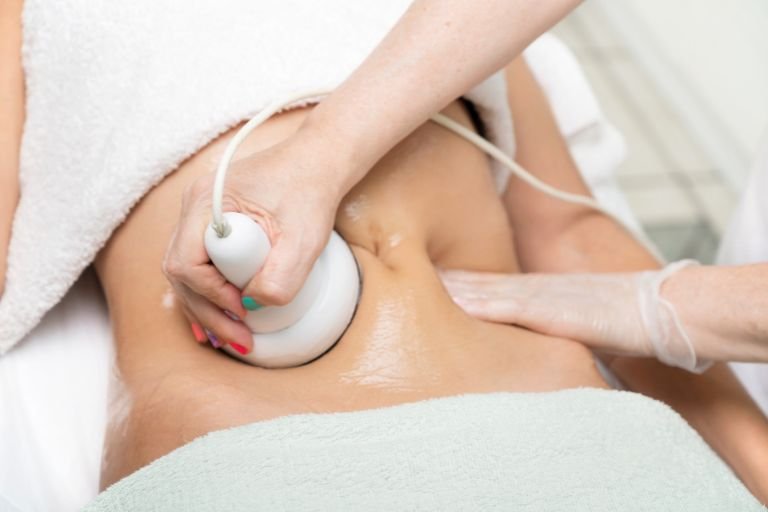- Fitwell Physiotherapy
Posture Correction

Posture correction is a vital aspect of overall health and well-being, as it directly impacts how efficiently our bodies function and how we feel on a day-to-day basis. Poor posture can lead to a myriad of issues including back pain, muscle tension, joint stiffness, and even headaches. Thankfully, there are various methods for correcting posture, each tailored to suit different needs and preferences.
Please submit your details below.
Types of Posture Correction:
Exercise and Stretching: Engaging in specific exercises and stretches can help strengthen muscles that support good posture while also increasing flexibility. These exercises often target the core, back, shoulders, and neck muscles.
Ergonomic Adjustments: Making adjustments to your workspace or environment can also aid in posture correction. This includes ensuring that your desk, chair, computer monitor, and keyboard are positioned ergonomically to encourage proper alignment.
Braces and Supportive Devices: There are various braces and devices available that provide support and gently encourage proper posture. These range from posture-correcting shirts and braces to specialized pillows and cushions.
Manual Therapy: Techniques such as chiropractic adjustments, massage therapy, and physical therapy can help realign the spine and alleviate tension in muscles, promoting better posture over time.
How It’s Performed:
Posture correction techniques can be performed independently at home, under the guidance of a healthcare professional, or through a combination of both. Exercises and stretches can be incorporated into daily routines, while ergonomic adjustments may require rearranging your workspace or investing in ergonomic furniture. Braces and supportive devices are typically worn during periods of prolonged sitting or activity to remind the body of proper alignment. Manual therapy sessions are conducted by trained professionals who manipulate the spine and soft tissues to improve alignment and relieve tension.
Contraindications:
While posture correction can be beneficial for many individuals, there are certain contraindications to consider. People with certain medical conditions or injuries may need to consult with a healthcare provider before engaging in certain posture correction methods. For example, individuals with osteoporosis, spinal fractures, or severe arthritis may require specialized care. Additionally, some people may experience discomfort or exacerbation of symptoms when initially correcting their posture, but this usually subsides as the body adjusts.
What to Expect:
The timeline for seeing improvements in posture varies depending on the individual and the severity of their posture issues. Consistency is key, and gradual progress can be expected with continued practice and adherence to recommended techniques. Initially, some discomfort or muscle soreness may be experienced as the body adapts to the new alignment. Over time, however, improvements in posture can lead to reduced pain, increased mobility, and enhanced overall well-being.
Benefits:
- Pain Relief: Correcting posture can alleviate common sources of pain such as backaches, neck tension, and headaches.
- Improved Mobility: Better posture enhances flexibility and range of motion, making everyday movements easier and more comfortable.
- Enhanced Breathing: Proper alignment of the spine and ribcage can improve respiratory function, leading to better breathing patterns.
- Boosted Confidence: Good posture is associated with confidence and self-assurance, positively impacting how others perceive us and how we feel about ourselves.
- Prevention of Future Issues: Addressing posture issues early can prevent the development of more serious musculoskeletal problems later in life.
In conclusion, posture correction is a proactive approach to maintaining overall health and well-being. By incorporating a combination of exercises, ergonomic adjustments, supportive devices, and manual therapy, individuals can improve their posture, alleviate discomfort, and enjoy the numerous benefits of proper alignment.
Frequently Asked Questions
Related Therapies
How Fitwell Physiotherapy Can Help?
Dr. Richa’s Fitwell physiotherapy has an extensive team of physiotherapists all within their own specialist areas of physiotherapy. Whatever your condition, we guarantee that we will have the best physiotherapist for you. We assess, diagnose, plan, cure and care for you.
Fitwell Physiotherapy Clinic, Pune provides you best physiotherapy treatment in Kharadi, pune. We also serve Chandan Nagar, Vadgaon Sheri, Keshav Nagar, Wagholi & nearby Areas in Pune. We are experts in treating Neck Pain, Hand Pain, Back Pain, Lower Back Pain, Knee Pain, Stiff Neck, Sciatica, Arthritis, Stroke Paralysis & Post Surgical Rehab.
We provide Specialized physiotherapy treatments in Sports Injuries, Pre and post Surgery, Neurologic, Pediatric, Chronic Pain/Fatigue, Rheumatology, Women’s Health, Men’s Health, Ergonomics, Vestibular, Amputees & all sort of Pain treatment and lifestyle conditions.



























